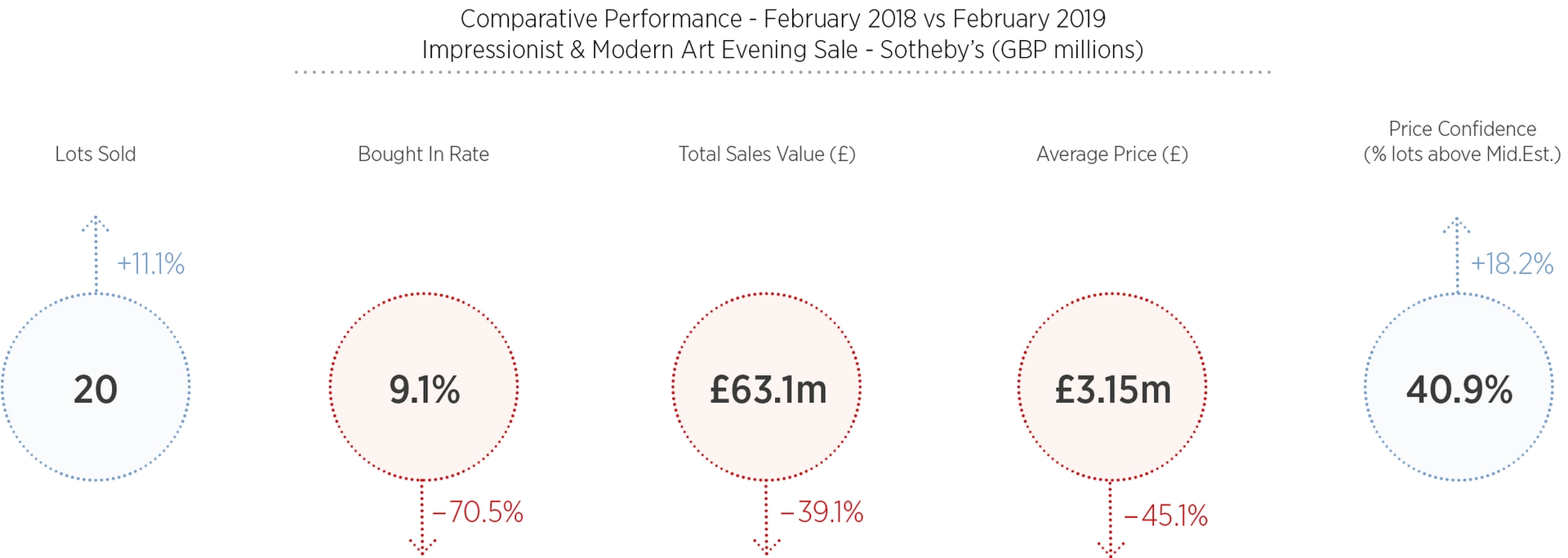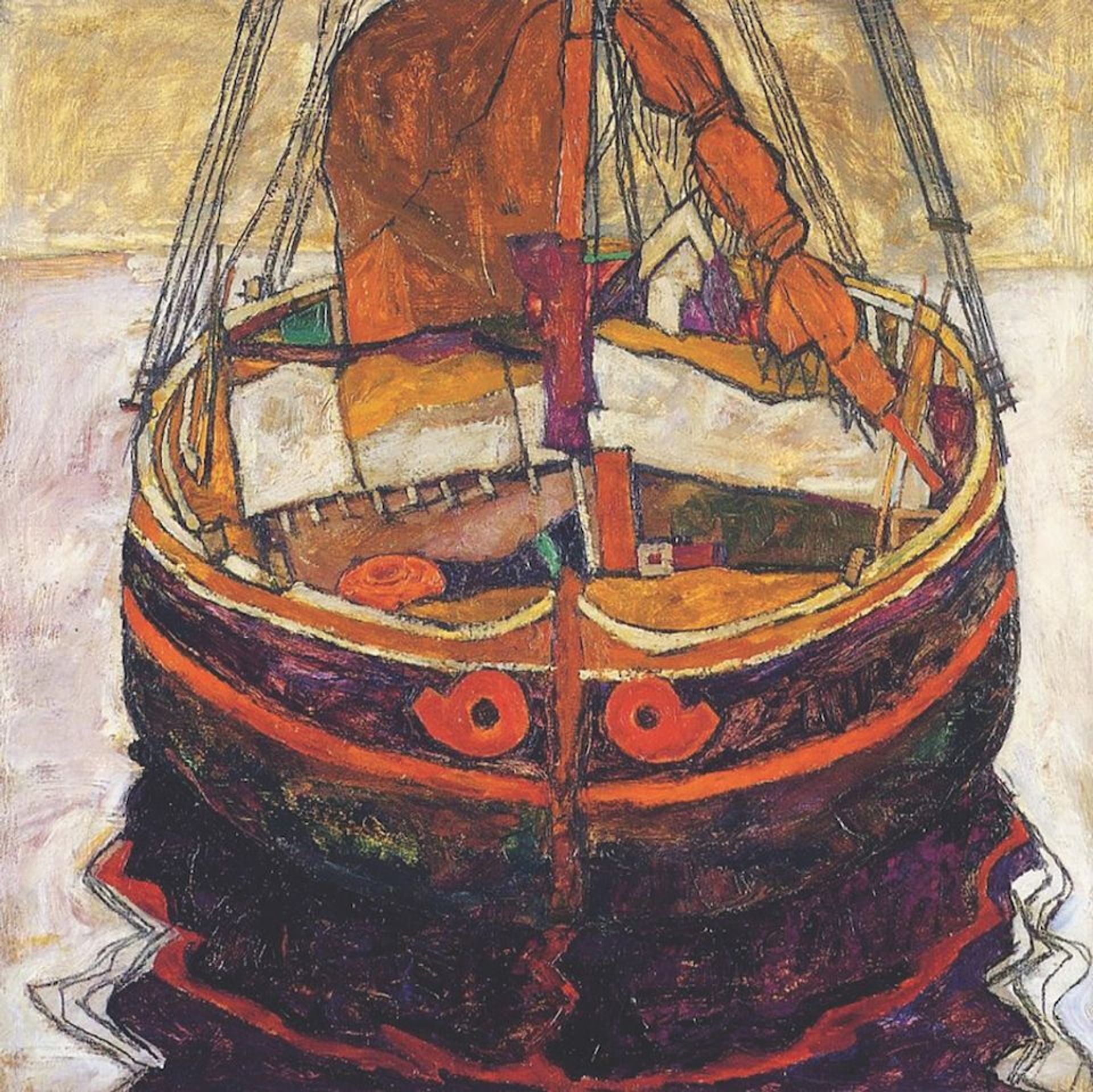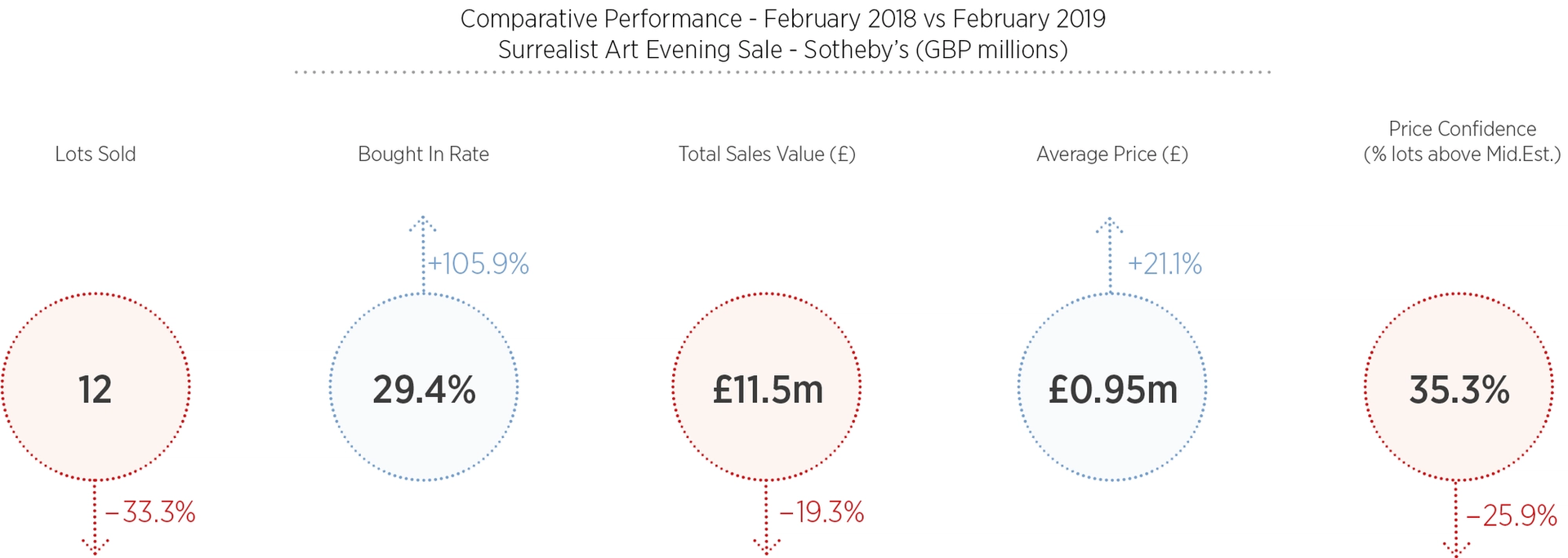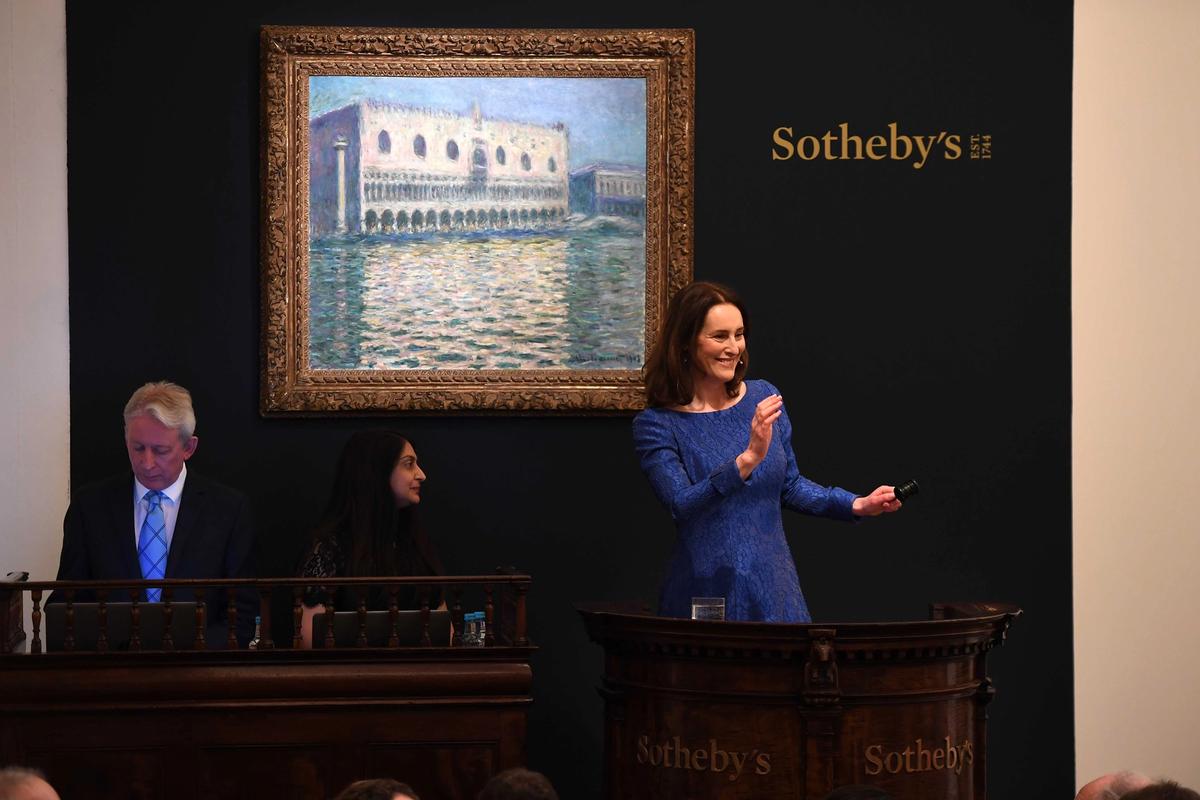London was snowbound for its February Impressionist and Modern art week last year. Now it is positively spring like, but the impending (if just delayed) Brexit deadline has put a chill in the air, although the Christie’s and Sotheby’s sale heads remain relentlessly optimistic ahead of this fortnight’s sales in London. The market is driven by the dollar, they say, so any jittery currency fluctuations means now is a cheap time for some UK art shopping. All is rosy.
Believe that if you will.
Sotheby’s Impressionist, Modern and Surrealist evening sale last night (26 February) lacked fireworks but was efficient, buoyed by some Asian and Russian buyers apparently unbothered by Prime Minister Theresa May’s woes.
The trim auction made £63m (£87.7m with fees) from 22 lots offered in the Impressionist and Modern section (an impressive 91% sold by lot) plus £11.4m from the 17 Surrealist lots, of which 12 sold. The Impressionist and Modern art total was just half that of the equivalent £136m sale in 2018, and a third of the record £194.7m in 2017, Sotheby’s highest ever total for a sale in London. The 2017 result was an anomaly, perhaps, but still the pre-sale estimate this year was the auction’s lowest since 2009 and perhaps this is a sign of the “more subdued market” that Sotheby’s chief executive Tad Smith warned of last year.

Arttactic's breakdown of Sotheby's February Impressionist and Modern art evening auctions in 2018 and 2019 shows at 39% drop in total sales Courtesy of ArtTactic
That said, the sell through rate was higher this year than last and the eight guaranteed lots (all backed by third parties) got away, if not spectacularly—Sotheby’s profit margins were squeezed in 2018 by some aggressively guaranteed lots that failed to live up to expectations. Perhaps its approach will be chastened this year.
Despite much talk of the concurrent slowdown of the Chinese economy, Asian buying was strong and auctioneer Helena Newman spoke after the sale of “Pan-Asian bidding” with active buying from Taiwan and Japan, alongside China. Indeed, the poster lot—Monet’s view of Le Palais Ducal (1908)—was underbid by a Japanese bidder. This inoffensive but dull painting, at auction for the first time, set a new record for a Venetian view by the artist, selling for £24m (£27.5m with fees), in the middle of a punchy £20m-£30m estimate.

Egon Schiele's Triestiner Fischerboot (Trieste Fishing Boat, 1912) Courtesy of Sotheby's
More interesting, although of more niche appeal, was Egon Schiele’s atypical boat painting, Triestiner Fischerboot (Trieste Fishing Boat, 1912). This unusual square canvas was painted just after the artist had done a stint in prison in Neulengbach, thanks to his bohemian lifestyle and use of childhood models ruffling feathers in a small country town. Hence, a shift to more uncontroversial subject matter—what could be more harmless than a fishing boat, albeit with a sensuous purple ripple or two around its hull.
The Fishing Boat had been in the same collection for over 50 years and was at auction for the first time. This subject has no auction precedent so estimating it was tricky, says the head of the evening sale Thomas Boyd-Bowman. But he judged it about right—the vivid painting sold at £9.2m (£10.7m with fees) to the Sotheby's vice chairman of private sales Samuel Valette’s phone bidder, underbid by Patti Wong, the chairman of Sotheby’s Asia.
The Wong/Newman double act is fast becoming part of the entertainment at Sotheby’s and at one point, the slow deliberations of Wong’s bidder caused a frustrated Newman to exclaim “Patti, what is to be discussed?!”.

ArtTactic's analysis of last night's Impressionist and Modern art sale at Sotheby's. All figures are based on hammer prices Courtesy of ArtTactic
The first lot of the sale was also by Schiele: Auf dem Bauch liegendes Mädchen (Girl Reclining on Stomach, 1910), a beautifully composed work on paper which had been bought in the 1930s by Daisy Hellmann (nee Steiner, the big Schiele collecting family) and passed down by descent. It was light damaged, however, and hence cautiously estimated at £500,000-£700,000. The prudent approach paid off, as six bidders from Europe and Asia pursued the watercolour, which sold for £1.3m (£1.6m with fees).
Jane Kallir of Galerie St. Etienne, a New York-based specialist in German and Austrian Expressionism, said after the sale: “I thought the first lot and the boat both did very nicely. The third lot [Sitzende, Rückenakt, a work on paper of a seated nude, estimate £1m-£1.5m] had a long, chequered history in the marketplace, and I was not surprised it was brought in. The estimate would have had to be much lower for it to sell.”
Whereas there is more French material in the huge Christie’s Impressionist, Modern and Surrealist art auction tonight (27 February), Sotheby’s sale was German and Austrian art heavy, perhaps encouraged by some strong results in New York in November. Alongside an early Ernst Ludwig Kirchner, Mädchen auf dem Diwan (Girl on a divan, 1906), being deaccessioned from New York's Museum of Modern Art, which sold for a mid-estimate £3.2m (£3.8m hammer) was an eerily still scene of a woman sitting at a table by Oskar Schlemmer. The German Bauhaus artist rarely appears in evening auctions—the last major oil painting came up in 1998 at Christie’s and sold for a record £1.9m. Twenty years later, Tischgesellschaft (1923), one of three works by the artist consigned to Sotheby’s from the collection of Dr Erika Pohl-Ströher, broke that record, though only just—guaranteed by a third party, it sold to a Russian buyer for £2.1m (£2.6m with fees).

René Magritte's L'étoile du matin Courtesy of Sotheby's
Surrealist art
The 17-lot Surrealist art sale received a patchy reception, with five lots going unsold—there were no guarantees. In November in New York, Sotheby’s set a new record for René Magritte when his Le Principe du plaisir (The Pleasure Principle, 1937), a portrait of the great Surrealist patron Edward James, sold for $26.8m with fees. With global demand for the Belgian Surrealist’s work still high, the obvious star going into last night’s sale was Magritte’s striking and undeniably stylish L’Etoile du matin (1938), a double portrait of the artists’s wife Georgette juxtaposed with a Native American, painted only a year after Le principe du Plaisir. It was bought in 1939 by a Belgian couple and had remained in the same collection ever since. At auction for the first time, it sold for a top-estimate £4.5m (£5.3m with fees) to a bidder on the phone with Benjamin Doller, Christie’s chairman of the Americas.

Comparison of Sotheby's evening Surrealist art sales in February 2018 and 2019 Courtesy of ArtTactic
But arguably the liveliest interest was for Francis Picabia's Atrata (1929), a large-scale oil and pencil at auction for the first time since 1974, whose subject—a saucer-eyed woman—basked in the attention of seven bidders, including some from Asia. With an estimate of £1.5m-£2m, it sold for £3.1m (£3.7m with fees), a record for a work from Picabia’s Transparencies series from the 1920s and 30s.

More data crunching from ArtTactic on Sotheby's Surrealist Art sale last night. All figures quoted are based on hammer prices Courtesy of ArtTactic


